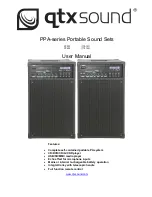
71
Configuration Examples
Useful Information on Internet Access
One of the most important services
in the Internet is e-mail. E-mails are
buffered in individual e-mail ac-
counts on a mail server. Mail servers
are operated by ISPs for example.
With the OpenCom 100 you can set
up one or more e-mail accounts for
every user account configured on
the OpenCom 100. These e-mail ac-
counts are then checked at regular
intervals.
If there are new e-mails in an e-mail
account, and the OpenCom 100 has
been configured for this function,
the user specified in the
OpenCom 100 user account is noti-
fied of the new e-mail on his system
terminal. System telephones from
the OpenPhone 6x and 2x product
range can also display information
such as the sender or the subject of
the e-mail.
NAT
Network address translation (NAT) is
activated on accessing the Internet
(ISP). You require this feature in or-
der to translate internal IP addresses
to valid external IP addresses. This
has three important consequences
for Internet access:
■
Several workstations can share a
single Internet access. You do
not require a LAN access, only a
single account with the Internet
service provider.
■
The IP addresses used in the LAN
are translated into IP addresses
valid worldwide. So you require
no such addresses for your LAN.
■
Only TCP/IP connections trig-
gered from a workstation can be
established. Consequently, while
you can call up Web pages from
a workstation, you cannot install
a Web server visible in the Inter-
net on a workstation.
Certain protocols cannot be used
when NAT is being used. This affects
protocols with the following proper-
ties:
■
TCP/IP addresses are trans-
ported in the useful load, e.g.
NetBIOS over TCP/IP.
■
The protocol requires an active,
inward-directed connection es-
tablishment, e.g. ICQ.
Summary of Contents for opencom 100
Page 1: ...OpenCom100 OpenCom 105 107 110 120 Mounting and Commissioning User Guide ...
Page 6: ...4 ...
Page 134: ...132 Index Notes ...
















































